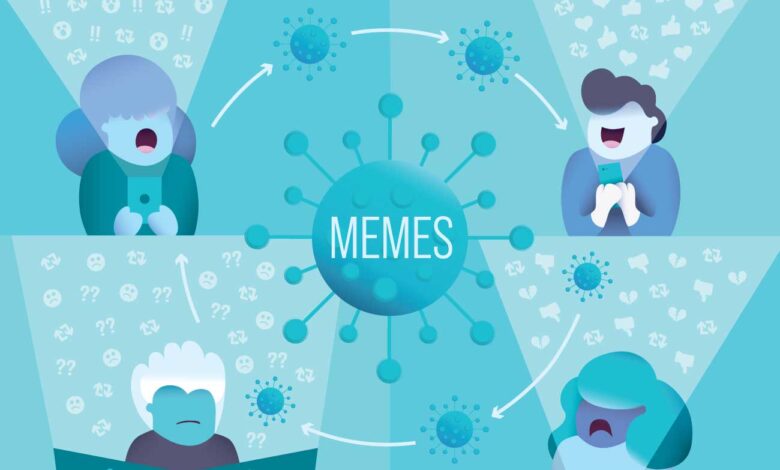The Role of Memes in Technology and Internet Culture

Memes have become an integral part of technology and internet culture, shaping how we communicate, share ideas, and engage with the world. These humorous and often satirical pieces of content have evolved alongside advancements in technology, much like the innovative solutions offered by https://revotechnologies.net/, making them a defining feature of online interactions. This article explores the role of memes in technology and internet culture, from their origins to their influence on modern communication.
1. The Evolution of Memes: From Early Internet to Today
Memes have a long history, starting as simple text-based jokes shared on early internet forums. The term “meme,” first coined by Richard Dawkins in 1976, referred to cultural ideas spread through imitation. With the rise of technology, memes transitioned from being niche content to a global phenomenon.
In the early 2000s, memes like “Dancing Baby” and “Bad Luck Brian” gained popularity through platforms like MySpace and YouTube. As technology advanced, social media platforms such as Facebook, Instagram, and Twitter became key drivers for meme culture, enabling faster and broader dissemination.
2. How Technology Has Shaped Meme Creation
Advancements in technology have made meme creation more accessible. Tools like image editing software and mobile apps allow users to create high-quality memes effortlessly. Features such as templates, GIF generators, and video editing apps have democratized meme production, allowing anyone with a smartphone to contribute to meme culture.
Artificial intelligence and machine learning have also begun playing a role in meme creation. AI tools can now generate memes based on user inputs or trending topics, further pushing the boundaries of creativity in meme-making.
3. Memes as a Tool for Modern Communication
Memes have redefined how people communicate online. A single meme can convey complex emotions, ideas, or reactions in a way that text alone cannot. Memes have become the “language” of the internet, with users relying on them to express humor, sarcasm, or solidarity.
In group chats, social media posts, or even corporate branding, memes are widely used to foster engagement and relatability. This has made them a vital tool for digital communication in both personal and professional settings.
4. Memes in Social Movements and Advocacy
The role of memes in technology and internet culture extends to social movements and advocacy. Memes have proven to be powerful tools for spreading awareness about critical issues. Movements like #MeToo and climate activism have leveraged memes to simplify complex topics, making them digestible for a wider audience.
Memes’ viral nature helps them reach millions quickly, creating a ripple effect that can amplify messages and drive social change. This has made memes a vital part of modern activism.
Read more : https://revotechnologies.net/
5. The Business of Memes: Marketing and Branding
Businesses have recognized the influence of memes in engaging audiences. Many companies now incorporate memes into their marketing strategies to appear relatable and connect with younger demographics. Meme marketing campaigns often go viral, leading to increased brand awareness and customer interaction.
For example, fast-food chains, e-commerce brands, and tech companies frequently use memes to highlight products or trends. This approach capitalizes on the humor and shareability of memes, making them a cost-effective marketing tool.
6. Challenges and Ethical Concerns in Meme Culture
While memes offer humor and engagement, they also come with challenges. Issues such as copyright infringement, cultural appropriation, and the spread of misinformation are common in meme culture. Memes can sometimes perpetuate stereotypes or harm individuals when taken out of context.
Furthermore, the use of memes in misinformation campaigns has raised concerns about their ethical implications. It’s essential to strike a balance between humor and responsibility when creating or sharing memes.
7. Memes and the Future of Internet Culture
The role of memes in technology and internet culture will likely continue to grow as technology advances. With the integration of virtual reality (VR) and augmented reality (AR), memes may become more interactive and immersive. AI-generated memes are also expected to evolve, offering endless possibilities for creativity.
Memes will remain a dynamic element of internet culture, reflecting societal trends and technological innovations. Their ability to adapt ensures their relevance in an ever-changing digital landscape.
Conclusion
The role of memes in technology and internet culture is undeniable. From their humble beginnings on early internet forums to their status as a global cultural phenomenon, memes have transformed how we communicate and interact online. They bridge humor, advocacy, and branding, making them versatile tools in the digital world. Much like learning How to Create a Balanced Meal Plan on a Budget can simplify everyday life, memes simplify complex ideas and foster connections. As technology continues to evolve, memes will undoubtedly remain at the forefront of internet culture, shaping the way we express ourselves and connect with others.



